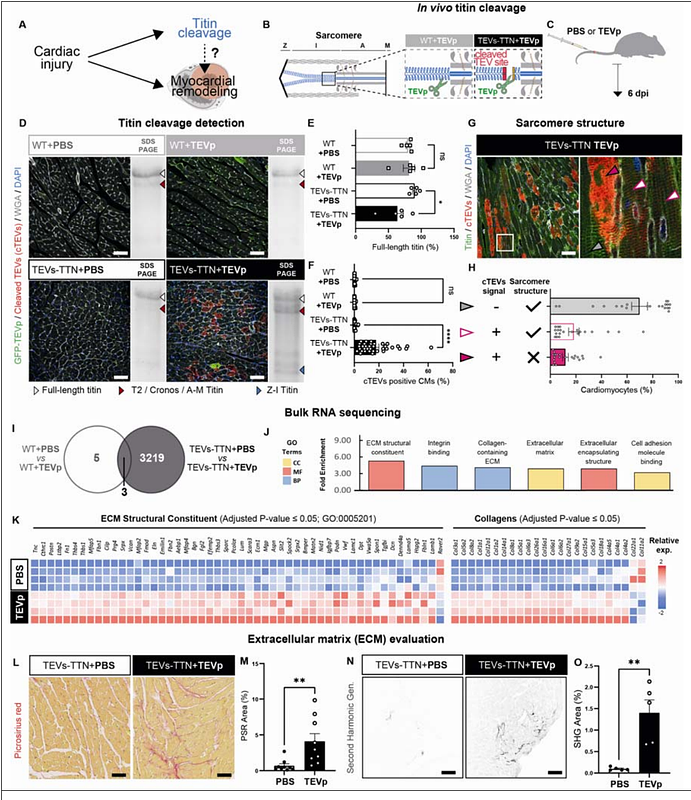Titin cleavage is a driver of cardiomyocyte disengagement and reactive myocardial fibrosis

Titin cleavage is a driver of cardiomyocyte disengagement and reactive myocardial fibrosis
Lopez-Unzu, M. A.; Pricolo, M. R.; Silva-Rojas, R.; Clemente-Manteca, A.; Sanchez-Ortiz, D.; Vicente, N.; Velazquez-Carreras, D.; Morales, C.; Gavilan-Herrera, M.; Sen-Martin, L.; Fernandez-Trasancos, A.; Labrador-Cantarero, V.; Sanchez-Garcia, L.; Relano-Ruperez, C.; Sanchez-Cabo, F.; Lalaguna, L.; Isern, J.; Munoz-Canoves, P.; Sabio, G.; Lara-Pezzi, E.; Herrero-Galan, E.; Alegre-Cebollada, J.
AbstractMyocardial remodeling including cardiomyocyte-death-independent, reactive fibrosis and disconnection of cardiomyocytes is at the basis of prevalent cardiac conditions converging into arrhythmias and heart failure. However, the molecular mechanisms behind these pathogenic responses remain incompletely understood limiting therapeutic opportunities. Here, we find that a molecular event common to unrelated heart diseases, namely the cleavage of the sarcomeric protein titin, is enough to trigger fast myocardial remodeling. Using an engineered system based on the expression of tobacco etch virus protease (TEVp) in mice, we show that 30% mosaic cardiac titin cleavage leads to global cardiomyocyte disengagement, activation of cardiac fibroblasts and interstitial collagen deposition. These effects are concurrent, involve ERK1/2 signaling, and are expected to contribute, at least, to myocardial remodeling in chemotherapy-induced cardiotoxicity and ischemia damage.